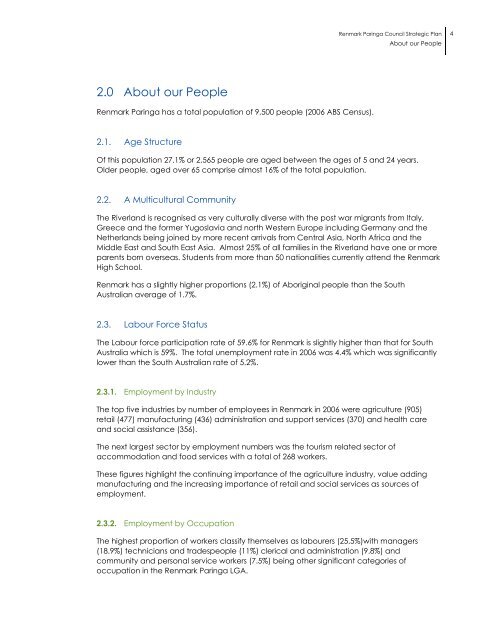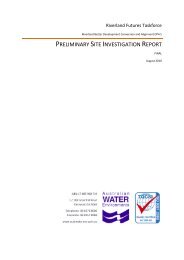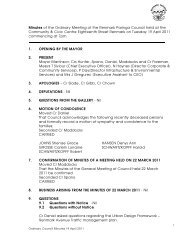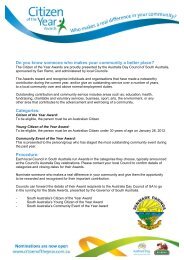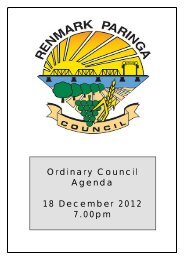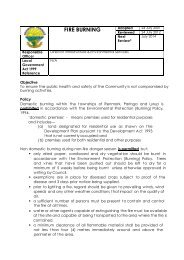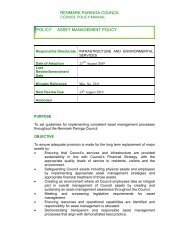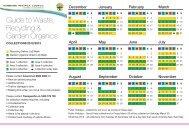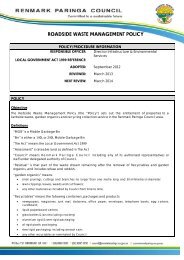Renmark Paringa Council
Renmark Paringa Council
Renmark Paringa Council
Create successful ePaper yourself
Turn your PDF publications into a flip-book with our unique Google optimized e-Paper software.
<strong>Renmark</strong> <strong>Paringa</strong> <strong>Council</strong> Strategic PlanAbout our People42.0 About our People<strong>Renmark</strong> <strong>Paringa</strong> has a total population of 9,500 people (2006 ABS Census).2.1. Age StructureOf this population 27.1% or 2,565 people are aged between the ages of 5 and 24 years.Older people, aged over 65 comprise almost 16% of the total population.2.2. A Multicultural CommunityThe Riverland is recognised as very culturally diverse with the post war migrants from Italy,Greece and the former Yugoslavia and north Western Europe including Germany and theNetherlands being joined by more recent arrivals from Central Asia, North Africa and theMiddle East and South East Asia. Almost 25% of all families in the Riverland have one or moreparents born overseas. Students from more than 50 nationalities currently attend the <strong>Renmark</strong>High School.<strong>Renmark</strong> has a slightly higher proportions (2.1%) of Aboriginal people than the SouthAustralian average of 1.7%.2.3. Labour Force StatusThe Labour force participation rate of 59.6% for <strong>Renmark</strong> is slightly higher than that for SouthAustralia which is 59%. The total unemployment rate in 2006 was 4.4% which was significantlylower than the South Australian rate of 5.2%.2.3.1. Employment by IndustryThe top five industries by number of employees in <strong>Renmark</strong> in 2006 were agriculture (905)retail (477) manufacturing (436) administration and support services (370) and health careand social assistance (356).The next largest sector by employment numbers was the tourism related sector ofaccommodation and food services with a total of 268 workers.These figures highlight the continuing importance of the agriculture industry, value addingmanufacturing and the increasing importance of retail and social services as sources ofemployment.2.3.2. Employment by OccupationThe highest proportion of workers classify themselves as labourers (25.5%)with managers(18.9%) technicians and tradespeople (11%) clerical and administration (9.8%) andcommunity and personal service workers (7.5%) being other significant categories ofoccupation in the <strong>Renmark</strong> <strong>Paringa</strong> LGA.


